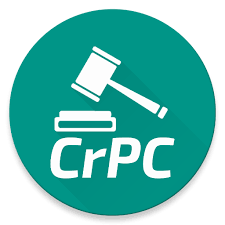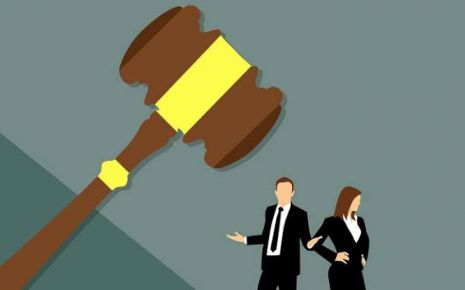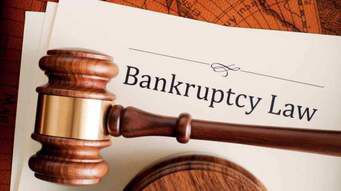Bhopal Gas Tragedy: A Disaster Which Shook India
About Bhopal Gas Tragedy
On December 3rd 1984 when gas leaked, and through that leakage thousands of people killed and permanently disabled the survivors. The gas effected almost 3787 people who are killed through the leakage of gas.The government representing the victims, secured 470 million USD as compensation from the union carbide corporation, from the act of gas leakage the State enacted several legislations including the public liability insurance act,1991 etc. judicial activism evolved absolute liability doctrine.
Regulations were framed, and now the situation is far better than , the disaster which happened. It was one of the most dangerous industrial disaster which led to killing of thousands of people and now also fear has not been vanished from the heart of the peoples who are working in the industries of hazardous substance. In 1970, the American enterprise, union carbide corporation established a pesticide plan in the populated area of Bhopal in India due its good networks for transportation. In 1984, the plant was manufacturing selvin ate one quarter of its capacity due to decreased demand of pesticides . the plant was kept on producting but on lower standards.
So, the government could not impose strict controls over them as there were large no. of labours employed under the industry. At around 1:00 pm on December 3rd massive amount of methyl isocyanide surrounded all over the city, within a small span of time many humans and animals were killed due to the poisonous gas. Around 3787 people died due to that poisonous gas. The local hospitals were all rushed with patients almost 10,000- 20,000 people died.
A large proportion of people who survived suffered from multi-system morbidities with the eyes and lungs are the body parts which were mostly harmed through the gas. The ICMR estimated that approx. 62.58% of the population of Bhopal suffered from inhalational toxicity through that poisonous gas. The population that survived developed morbidity of varying degree over the next 25 years. The doctors were clueless at that time, that what is affecting the sufferers.
The Bhopal gas leakage is the worst ever industrial accident that happened in the history of India. Compensation to accident victims was the only mater in the Bhopal gas tragedy. In order to avoid the problem, parliament passed the Bhopal gas leak disaster Act 1985 (Bhopal act). The Bhopal act conferred on the government of India the responsibility of suing parens patriae on behalf of the accident victims.
The government of India filed a suit for compensation to the victims from district court, southern court of USA, New york. The only question before the government of India was that whether the district court of USA is convenient or not. So for the government of India has no other option except filing a compensation suit before the District Court of Bhopal on behalf of the victims. The interim order passed by this court and passed order by Madhya pradesh high court against this interim order was scrutinized by the supreme court on an appeal. In union carbide corporation vs. union of India, supreme court compromises orders on different dates.
Consequences
Union carbide India limited (UCIL) factory was built in 1969 to produce the pesticide using methyl isocyanate as an intermediate. An MIC production plant was added to the UCIL site in 1979. The chemical process employed in the Bhopal plant had methylamine reacting with phosgene to form MIC.
This is a kind of chemical which hurts the respiratory system of the person and cause slow death to a person. In the 1980s the demand for pesticides had fallen, but production continued, leading to buildup of stores of unused MIC where the method was used.
In this factory in 1976, two of the accidents already had happened, two local trade unions complained of pollution within the plant. In 1981, a worker was accidentally splashed with phosgene as he was carrying out a maintenance job of the plants pipes.
In January 1982, a phosgene gas leaked and almost 24 workers were hospitalized, and none of the workers were given or ordered to wear masks. In February 1982 , 18 workers also gets hospitalized and then a chemical engineer got burns over 30% of his body. In 1983 & 1984 there were leaks of MIC , chlorine, monomethylamine, phosgene and carbon tetrachloride. The Bhopal UCIL facility housed three underground 68000 liters liquid of MIC storage tanks.
During the late evening hours of 2 December 1984, water was believed to have entered a side pipe, the water into the tank subsequently resulted in a runaway exothermic reaction, which accelerated high temperatures and other factors. The MIC gas leaked from tank, fifteen minutes later the plants public siren sounded. The initial effect of that leakage led to effects of coughing, eye irritation and suffocation, problem in lungs , respiratory system, vomiting, breathing problem, pain in stomach.
Everyone was trapped in that scenario, the drastic disaster took place which took lives of thousands of people. Methyl isocyanate gas was spread in air approximately twice as dense as air. Warren Anderson was the chairman and was told to overcome the problem of technical faults and plants and machines but he didnt listened to anyone.
Steps taken after the disaster
It is a sad truth that such a tragic incident had to happen for us to realise the importance of safety standards.In response to the disaster, the government brought forth various legislations. This marked the shift in the consciousness with regard to environmental issues. The legislative developments are outlined below.
The principle of absolute liability
The English Principle of strict liability as laid down by Ryland vs Fletcher, was the governing principle in India before M.C Mehta vs Union of India. In this case, the Supreme Court increased the bar of tortious liability when it held that an enterprise engaging in any harmful or inherently dangerous activity had an absolute and non-delegable duty to ensure that no one was harmed, and if anyone was harmed, they were to be compensated.The Supreme Court did not accept the exceptions which had evolved in English jurisprudence regarding strict liability. Bhagwati. J states in the case that, We have to develop our own law and if we find that it is necessary to construct a new principle of liability to deal with an unusual situation which has arisen and which is likely to arise in future on account of hazardous or inherently dangerous industries which are concomitant to an industrial economy, there is no reason why we should hesitate to evolve such principle of liability merely because it has not been so done in England.
This ruling was significant in that the Supreme Court determined the effective control in the Indian scenario to regulate an environment in which industrial growth was not matched with necessary legal reform.
The Environment Protection Act was enacted in 1986. The act defines the environment and authorizes the central government to take all such measures as it deems necessary or expedient for the purposes of protecting and improving the quality of the environment and preventing, controlling and abating environmental pollution. In this connection, the central government has the authority to issue direct written orders including orders to close, prohibit, or regulate any industry, operation or process or to stop or regulate the supply of electricity, water or any other service. The act conforms to the commitments made by the Stockholm Declaration, 1972.
The Factories Act was amended to include the list of hazardous industries] and the provision to locate an industry]. The Central and State Pollution Control Board laid down comprehensive industrial standards for the control of effluents and emissions.
The Public Liability Insurance Act, 1991 is another act with an aim to provide immediate relief to the victims affected by accidents while handling hazardous substances and for matters connected therewith or incidental thereto.
The Act incorporates a provision making it mandatory for the industrial units that every owner shall take out before he starts handling any hazardous substance, one or more insurance policies and renews it or them from time to time before the expiry of validity. It will allow the victims of such incidents to get compensation immediately, which will not bar them to seek larger compensation. The act recognises the absolute liability or no-fault liability doctrine.
Acknowledging the need to deal with the cases related to the environment effectively and expeditiously, the government established a National Green Tribunal in 2010 through the National Green Tribunal Act, 2010. The tribunal exclusively deals with the cases arising out of environmental issues.
After the Bhopal Gas Tragedy, the importance of environmental regulation became starkly evident. The inadequate measures and the vacuum in the legal system were also exposed. The Supreme Court, in order to fill such loopholes, applied Judicial Activism. The scope of Article 21 was considerable widened to include the right to a clean environment. This way, environmental concerns became the part of the constitution as well as the rights of the citizens.
The Environment Impact Assessment Notification in 1994 was also a significant step to calculate risks associated with any project which will determine whether or not it is granted clearance.
Hazardous Wastes (Management, Handling and Transboundary Movement) Rules, 2008, provide for means of safe storage and disposal of hazardous waste (which is listed in its schedules) with the help of central and state pollution control boards.
Chemical Accidents (Emergency Planning, Preparedness, and Response) Rules, 1996 was also enacted, which address gas leaks and similar events. The Chemical Accidents Rules seem to have been framed for the exact purpose of monitoring plants or industries like the UCC in Bhopal.
The state pollution control boards are required to give the industry consent to establish and then consent to operate. But all that the pollution boards do is to process the consent and authorisation. They do not have time to monitor compliance with standards for pollution or enforce their directions.
There is also no deterrence in the system. The maximum penalty imposed by courts under the Water (Prevention and Control of Pollution) Act is Rs 10,000 and under EPA, it is Rs 1 lakh. But only courts can impose this penalty. So all the boards can do is to either deny the consent to operate or issue closure notice for 30 days.
These problems need to be fixed before it is too late to save the environment.[1]
End-Notes:
- https://blog.ipleaders.in/bhopal-gas-tragedy-case-study/
Written By- Meghna Gupta, Institution – K.r. Mangalam University
Law Article in India
Legal Question & Answers
Lawyers in India - Search By City
LawArticles
How To File For Mutual Divorce In Delhi

How To File For Mutual Divorce In Delhi Mutual Consent Divorce is the Simplest Way to Obtain a D...
Increased Age For Girls Marriage

It is hoped that the Prohibition of Child Marriage (Amendment) Bill, 2021, which intends to inc...
Facade of Social Media

One may very easily get absorbed in the lives of others as one scrolls through a Facebook news ...
Section 482 CrPc - Quashing Of FIR: Guid...

The Inherent power under Section 482 in The Code Of Criminal Procedure, 1973 (37th Chapter of t...
The Uniform Civil Code (UCC) in India: A...

The Uniform Civil Code (UCC) is a concept that proposes the unification of personal laws across...
Role Of Artificial Intelligence In Legal...

Artificial intelligence (AI) is revolutionizing various sectors of the economy, and the legal i...








Please Drop Your Comments